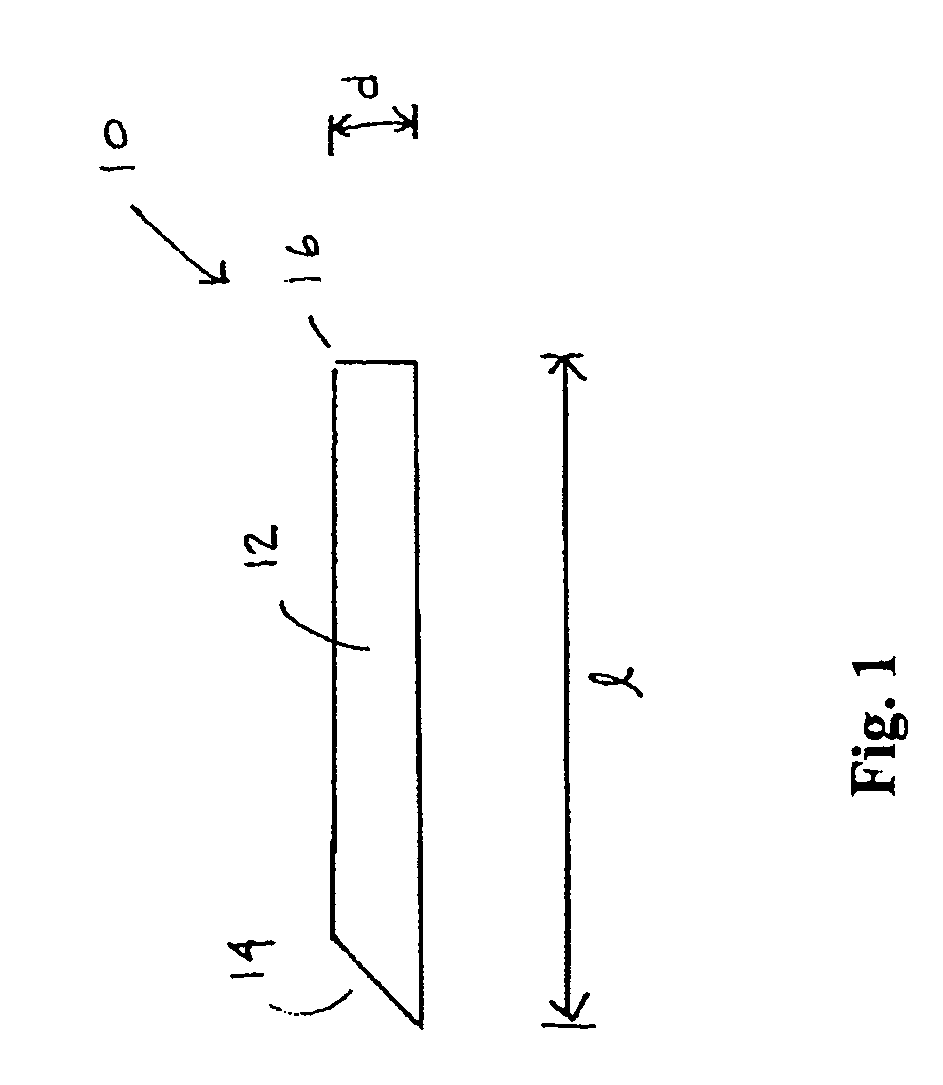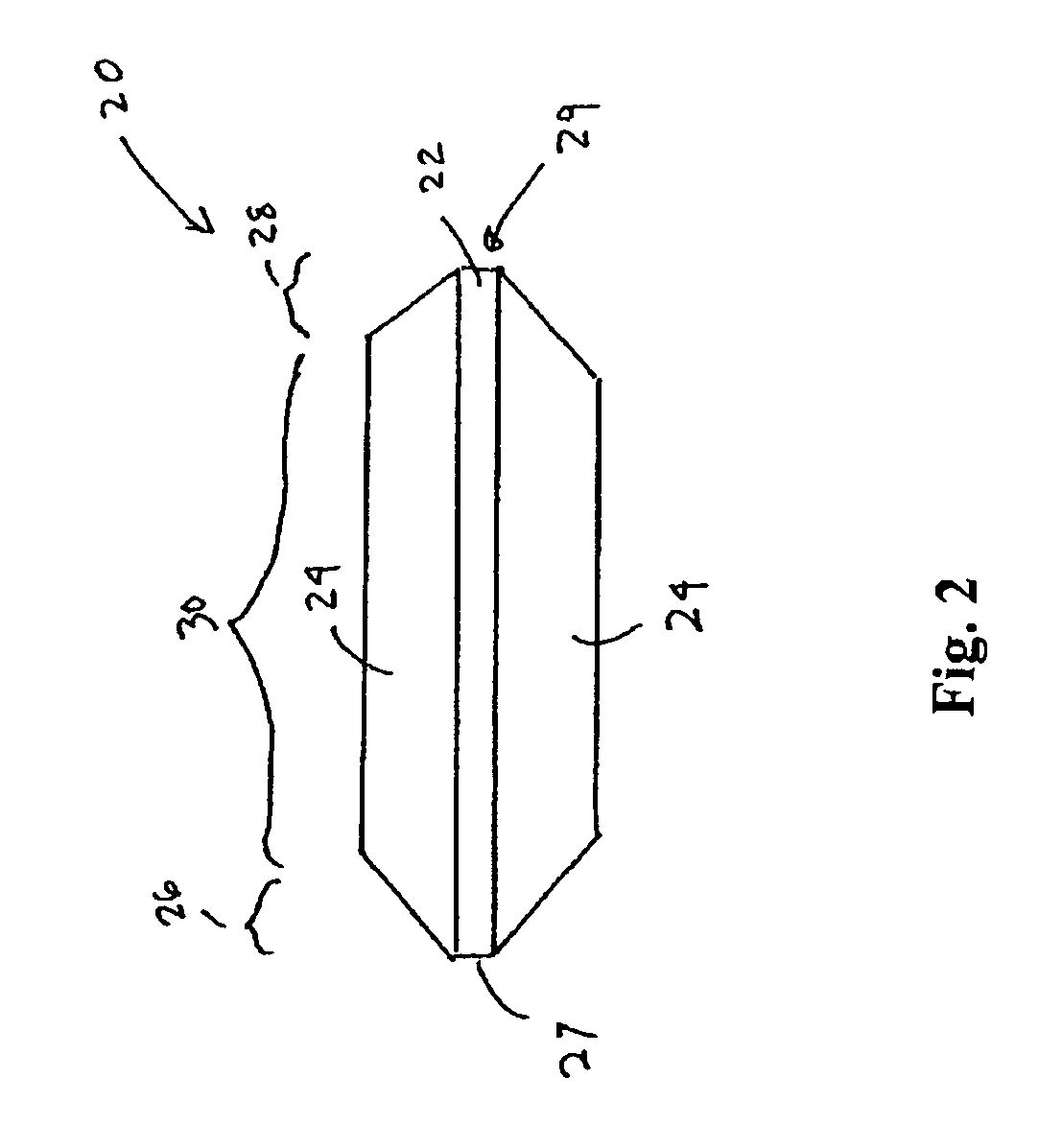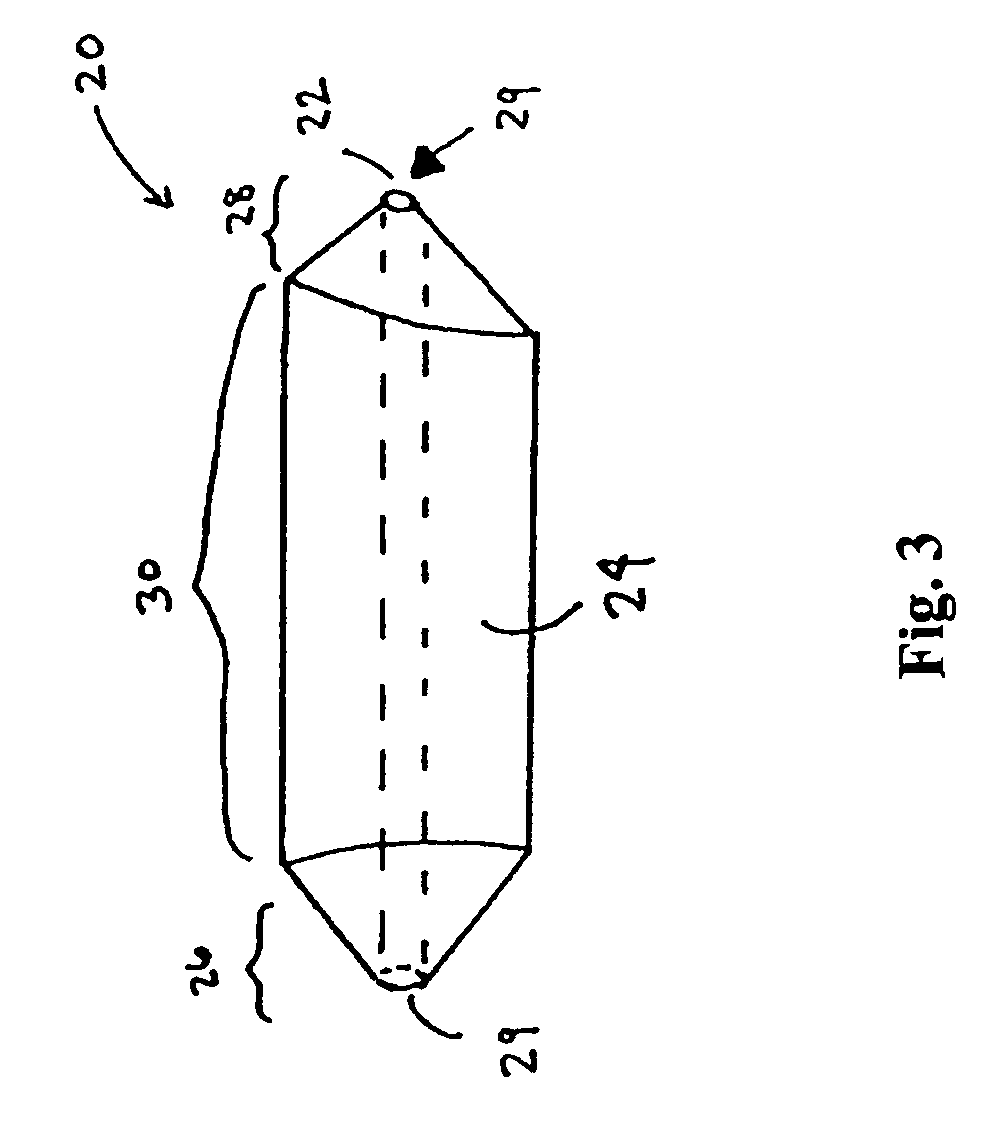However, placement of implantable devices in limited access regions of the body can present challenges.
High systemic doses of bioactive agents can penetrate this blood ocular barrier in relatively small amounts, but
expose the patient to the risk of
systemic toxicity.
However, these repeated injections carry the risk of such complications as infection, hemorrhage, and
retinal detachment.
Patients also often find this procedure somewhat difficult to endure.
However, delivery of drugs, proteins and the like to the eye(s) of mammals so as to achieve the desired therapeutic or medical effect, especially to the
retina and / or the
choroid, has proven to be challenging, particularly as a result of the geometry,
delicacy and / or behavior of the eye and its components.
In many
ophthalmic disorders involving the
retina, posterior tract, and
optic nerve, adequate levels of the drug cannot be achieved or maintained by oral or parenteral routes of administration.
Such further and repeated administrations of such drugs, however, may produce undesired
systemic toxicity.
This
route of administration (topical administration), however, is only effective in treating problems involving the superficial surface of the eye and diseases that involve the
cornea and anterior segment of the eye, such as for example, conjunctivitis.
Topical administration of drugs is ineffective in achieving adequate concentrations of a drug(s) in the
sclera, vitreous, or posterior segment of the eye.
In addition, topical eye drops may drain from the eye through the
nasolacrimal duct and into the
systemic circulation, further diluting the medication and risking unwanted systemic side effects.
Furthermore, delivery of drugs in the form of topical eye drops is also of little utility because the drug cannot cross the
cornea and be made available to the vitreous,
retina, or other subretinal structures such as the
retinal pigment epithelium (“RPE”) or choroidal vasculature.
Typically, drugs of interest are highly unstable and therefore not easily formulated for topical delivery.
Direct delivery of drugs to the eye by a topical insert has also been attempted, however, this method is not desirable.
Consequently, this technique demands a certain degree of manual dexterity that can be problematic for geriatric patients who are particularly susceptible to certain eye disorders that appear
age related (such as
age related macular degeneration).
Also, in many instances such topical inserts may cause
eye irritation and such inserts are prone to inadvertent loss due to
eyelid laxity.
In addition, these devices provide a source of drug only to the
cornea and anterior chamber, and thus do not provide any pharmacologic
advantage over topical eye drops or ointments.
Thus, such devices have limited, if any at all, utility for providing an effective source of drugs to the vitreous or tissues located in the posterior segment of the eye.
In addition, it also is well known that many therapeutic drugs cannot easily diffuse across the retina.
In addition to the relative effectiveness of
drug delivery across the barrier, complications or side effects have been observed when using the direct injection into vitreous technique with some therapeutics.
When these compounds were used to treat
neovascularization of the posterior segment by direct injection, these compounds were observed to cause undesirable side effects in many patients.
Moreover, a risk exists that the use of corticosteroids in patients with normal
intraocular pressure will cause elevations in pressure that result in damage to
ocular tissue.
Since therapy with corticosteroids is frequently long term (typically several days or more), a potential exists for significant damage to
ocular tissue as a result of prolonged elevations in
intraocular pressure attributable to that therapy.
Such a course of treatment also increases the duration and cost as well as the realistic risks of corneal ulceration, cataract formation, intraocular infection, and / or vitreous loss that accompany these procedures.
Thus, there are a number of drawbacks with currently available methods for treating eye disorders and diseases.
For example, in the case of these posterior segment eye diseases, traditional routes of
drug administration such as topical or oral dosing often fall short of reaching the
disease site.
Subsequently, this approach often requires frequent,
large dose injections that have been associated with complications such as
glaucoma and cataract formation.
Microparticle injections have improved the sustained release capabilities of conventional injections, but this still does not resolve the widespread distribution of the medication via intraocular
convection.
In the case of steroids, this distribution is known to lead to adverse effects such as
glaucoma and cataract.
 Login to View More
Login to View More 


